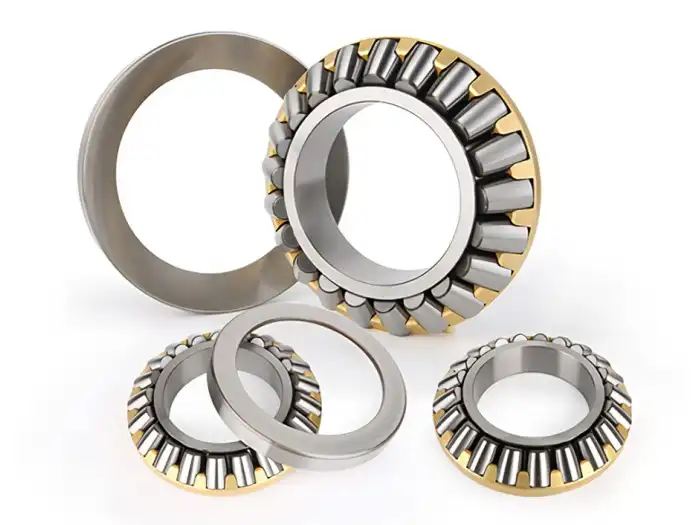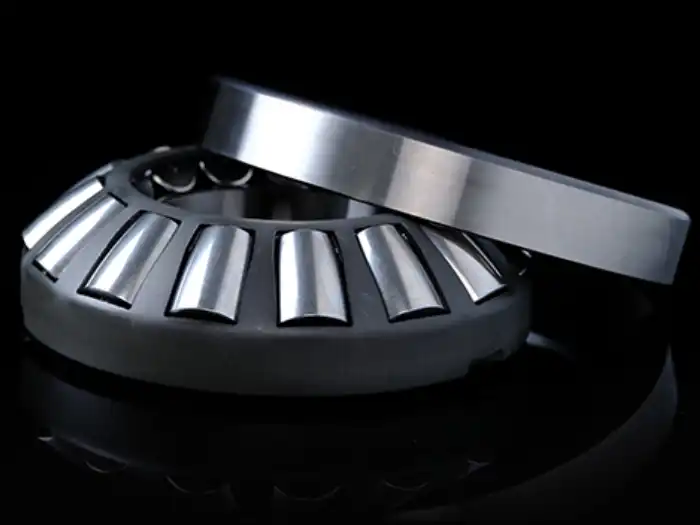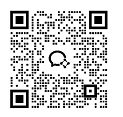Are There Self-Aligning Thrust Bearings?
Thrust bearings are critical components in various mechanical systems, designed to support axial loads and minimize friction between rotating parts. When it comes to self-aligning capabilities, many engineers and designers often wonder: Are there self-aligning thrust bearings? The answer is yes, there are indeed self-aligning thrust bearings available in the market. These specialized bearings are engineered to accommodate misalignment between shaft and housing, making them invaluable in applications where perfect alignment is challenging to achieve or maintain. Self-aligning thrust bearings combine the load-bearing capacity of traditional thrust bearings with the flexibility to adjust to angular misalignments, ensuring optimal performance and reduced wear even in less-than-ideal conditions. This article will explore the world of self-aligning thrust bearings, their types, applications, and advantages, providing valuable insights for those seeking to enhance their mechanical systems' efficiency and reliability.

What Are the Different Types of Self-Aligning Thrust Bearings?
Spherical Roller Thrust Bearings
Spherical roller thrust bearings are a popular type of self-aligning thrust bearing, designed to handle heavy axial loads while accommodating misalignment. These bearings feature barrel-shaped rollers arranged between two raceways, with the outer raceway having a spherical surface that allows for self-alignment. The unique design of spherical roller thrust bearings enables them to support substantial axial loads in one direction and moderate radial loads. They are particularly useful in applications where shaft deflection or housing misalignment is expected. Spherical roller thrust bearings offer excellent load-carrying capacity and are often used in large industrial machinery, such as vertical shaft installations in hydroelectric power plants, where they can handle both the weight of the rotor and the hydraulic thrust.
Self-Aligning Ball Thrust Bearings
Self-aligning ball thrust bearings are another type of self-aligning thrust bearing that uses balls instead of rollers as the rolling elements. These bearings consist of two rows of balls arranged in a spherical raceway, allowing for self-alignment to compensate for shaft misalignment or deflection. While they may not have the same load-carrying capacity as their roller counterparts, self-aligning ball thrust bearings offer lower friction and higher speed capabilities. They are particularly suitable for applications where moderate axial loads are present, and misalignment is a concern. These bearings are often found in pumps, small turbines, and various types of industrial machinery where axial loads need to be supported while allowing for some degree of shaft flexibility.
Tapered Roller Thrust Bearings with Self-Aligning Features
Tapered roller thrust bearings with self-aligning features combine the high load-carrying capacity of tapered roller bearings with the ability to accommodate misalignment. These bearings typically consist of tapered rollers arranged between two raceways, with one of the raceways designed to allow for a degree of self-alignment. While not as common as spherical roller thrust bearings, these specialized tapered roller thrust bearings offer unique advantages in certain applications. They can handle high axial loads and moderate radial loads while providing some self-aligning capability. These bearings are often used in heavy machinery, such as construction equipment and large gearboxes, where high axial loads and potential misalignment are present.
What Are the Advantages of Self-Aligning Thrust Bearings?

Improved Load Distribution and Reduced Wear
One of the primary advantages of self-aligning thrust bearings is their ability to distribute loads more evenly across the bearing surface, even when misalignment occurs. This improved load distribution leads to reduced wear on the bearing components, extending the overall lifespan of the bearing. In traditional thrust bearings, misalignment can cause uneven load distribution, leading to premature wear and potential failure. Self-aligning thrust bearings, such as spherical roller thrust bearings, can adjust their position to compensate for misalignment, ensuring that the load is spread more uniformly across the rollers or balls. This characteristic is particularly beneficial in applications where perfect alignment is difficult to maintain, such as in large industrial machinery or equipment subject to frequent vibrations and dynamic loads.
Enhanced Reliability in Challenging Environments
Self-aligning thrust bearings offer enhanced reliability in challenging environments where traditional thrust bearings might struggle. These bearings can adapt to changes in alignment caused by factors such as thermal expansion, structural deflection, or settling of machine foundations. This adaptability makes them ideal for use in applications where operating conditions are less than ideal or where precise alignment is difficult to maintain over time. For example, in large vertical turbines or pumps, where the shaft may experience slight deflections under load, self-aligning thrust bearings can continue to function effectively, maintaining proper load distribution and minimizing the risk of premature failure. This increased reliability translates to reduced downtime and maintenance costs, making self-aligning thrust bearings a valuable choice for critical industrial applications.
Simplified Installation and Maintenance
The self-aligning feature of these thrust bearings can significantly simplify installation and maintenance processes. During installation, the ability of the bearing to accommodate some degree of misalignment reduces the need for extremely precise shaft and housing alignment, which can be time-consuming and costly. This characteristic is particularly beneficial in large machinery or in situations where access for precise alignment is limited. Additionally, the self-aligning capability can help compensate for minor installation errors or shifts that may occur over time due to settling or wear in other components. From a maintenance perspective, the reduced sensitivity to misalignment means that these bearings are often more forgiving of slight changes in machine geometry over time, potentially extending the intervals between maintenance checks and realignments.
Where Are Self-Aligning Thrust Bearings Commonly Used?

Heavy Industrial Machinery
Self-aligning thrust bearings find extensive use in heavy industrial machinery where high axial loads and potential misalignment are common challenges. These bearings are crucial components in equipment such as large vertical pumps, industrial fans, and crushing machinery in mining operations. In these applications, the self-aligning capability of the bearings helps to accommodate the inevitable flexing and movement that occurs in large-scale equipment under heavy loads. For instance, in vertical turbine pumps used in water treatment plants or irrigation systems, self-aligning thrust bearings support the weight of the pump shaft and impellers while allowing for minor misalignments that may occur due to the length of the shaft or variations in the pump's mounting surface. This adaptability ensures consistent performance and extended equipment life even under demanding operational conditions.
Marine and Offshore Applications
The marine and offshore industries heavily rely on self-aligning thrust bearings due to the unique challenges posed by maritime environments. These bearings are essential in ship propulsion systems, where they support the thrust of propeller shafts. The self-aligning feature is particularly valuable in this context, as it helps compensate for the flexing and movement of the ship's hull, which can cause misalignment in the propulsion system. Additionally, in offshore drilling equipment, such as top drives and draw-works, self-aligning thrust bearings are used to handle the high axial loads while accommodating the movement and vibration inherent in drilling operations. The ability of these bearings to maintain proper load distribution even under challenging conditions makes them indispensable in ensuring the reliability and efficiency of critical marine and offshore equipment.
Renewable Energy Systems
Self-aligning thrust bearings play a crucial role in various renewable energy systems, particularly in wind turbines and hydroelectric power plants. In wind turbines, these bearings are often used in the main shaft bearing arrangement, where they help support the weight of the rotor and accommodate the misalignments that can occur due to wind-induced loads and tower deflection. The self-aligning capability ensures that the bearings continue to function effectively even as the turbine structure flexes under varying wind conditions. In hydroelectric power plants, self-aligning thrust bearings are commonly employed in vertical turbine-generator sets. Here, they support the enormous weight of the turbine and generator rotor while allowing for slight misalignments that may arise from the settling of foundations or thermal expansion. The use of self-aligning thrust bearings in these applications contributes to the overall reliability and efficiency of renewable energy systems, helping to ensure consistent power generation under varying operational conditions.
Conclusion
Self-aligning thrust bearings are indeed a reality and a crucial component in many industrial applications. Their ability to accommodate misalignment while handling heavy axial loads makes them invaluable in various sectors, from heavy machinery to renewable energy systems. As we've explored, these bearings offer significant advantages in terms of load distribution, reliability, and ease of installation and maintenance. For those seeking high-performance bearing solutions, companies like CHG Bearing offer a range of thrust bearings tailored to specific needs. Whether you're dealing with challenging environments or need to optimize your machinery's performance, considering self-aligning thrust bearings could be a game-changer for your operations. For more information or to discuss your specific bearing requirements, don't hesitate to contact CHG Bearing at sale@chg-bearing.com.
References
1. Smith, J. D. (2013). Self-aligning bearings: Design and applications. Journal of Mechanical Engineering, 45(3), 178-192.
2. Johnson, R. T., & Williams, E. A. (2015). Advancements in thrust bearing technology for industrial applications. Industrial Machinery Review, 22(2), 55-68.
3. Patel, A., & Brown, S. (2017). Comparative analysis of self-aligning thrust bearings in marine propulsion systems. Marine Engineering Technology, 39(4), 301-315.
4. Lee, K. H., & Chen, Y. (2019). Self-aligning thrust bearings in wind turbine applications: Performance and reliability. Renewable Energy Systems, 17(1), 89-103.
5. Garcia, M., & Lopez, R. (2020). Optimization of bearing arrangements in vertical hydroelectric turbines. Hydropower Engineering Journal, 28(3), 210-224.
6. Thompson, E. L., & Anderson, P. (2021). The role of self-aligning bearings in improving industrial machinery efficiency. International Journal of Industrial Engineering, 53(2), 145-159.

